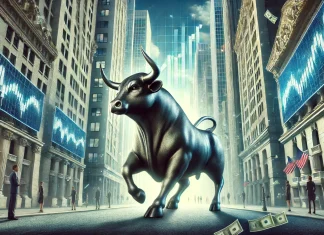GameStop (NYSE:GME) reported a surprise profit in the fiscal fourth quarter, with earnings of 16 cents a share compared to a loss of 49 cents a year earlier. This exceeded analysts’ expectations, who had forecast a non-GAAP loss of 13 cents a share. Sales reached $2.23 billion, surpassing the estimated $2.18 billion.
This marked GameStop’s first profitable quarter since January 2021. The stock surged 37% in after-hours trading following the announcement. Sales in the hardware and accessories category increased by 4.6%, while software sales declined by 15%. The collectibles category saw a 12% growth in sales. GameStop stock rose 4.6% in regular Tuesday trading, and AMC Entertainment Holdings (AMC) was up 3.5%.
The stock is down 2.6% so far this year and 42% in the past 12 months. Despite raising cash and paying debt through its meme stock status, GameStop’s outlook remains dampened by the shift to digital downloads and the underperformance of its investments in nonfungible tokens.
The previous close for the stock was at $16.87. The stock’s day range was between 17.14 and 18.35, while the 52-week range was $15.41 to $49.85. The trading volume for the day was 4,924,418 shares, higher than the average volume of 4,360,279 shares.
Short sellers can get trapped in a situation known as a “short squeeze.” A short squeeze occurs when the price of a stock that has a high percentage of short interest starts to rise rapidly, forcing short sellers to buy shares to cover their positions and minimize their losses. This buying pressure can further drive up the stock price, creating a cycle that exacerbates the situation for short sellers.
Here’s how shorts can get trapped:
- High short interest: A stock with a high percentage of its shares sold short indicates that many investors are betting on the stock’s price to decline. This makes the stock susceptible to a short squeeze.
- Positive news or events: This seems to be the case with GME stock. When a stock with high short interest experiences positive news, such as better-than-expected earnings or a strategic partnership, its price may start to rise. This can trigger short sellers to buy shares to cover their positions.
- Low float: A stock with a low float, or a limited number of shares available for trading, can make it difficult for short sellers to find shares to buy and cover their positions. This can further increase buying pressure, driving the stock price higher.
- Panic buying: As the stock price continues to rise, more short sellers may rush to buy shares to cover their positions and avoid further losses. This can create a panic buying situation, causing the stock price to soar even higher.
- Margin calls: If short sellers have borrowed money to short the stock, they may face margin calls from their brokers, requiring them to deposit more funds or close out their short positions. This can lead to additional buying pressure and further fuel the short squeeze.
In summary, shorts can get trapped when a stock with high short interest experiences a rapid increase in price, forcing short sellers to buy shares to cover their positions. This buying pressure can drive the stock price even higher, creating a short squeeze and trapping short sellers in a cycle of escalating losses.
Ape stocks, a term coined by the retail investing community to refer to stocks popular among retail investors, such as GameStop (GME) and AMC Entertainment (AMC), have experienced significant price volatility as enthusiastic individual investors band together to drive up share prices and challenge traditional market dynamics.

















